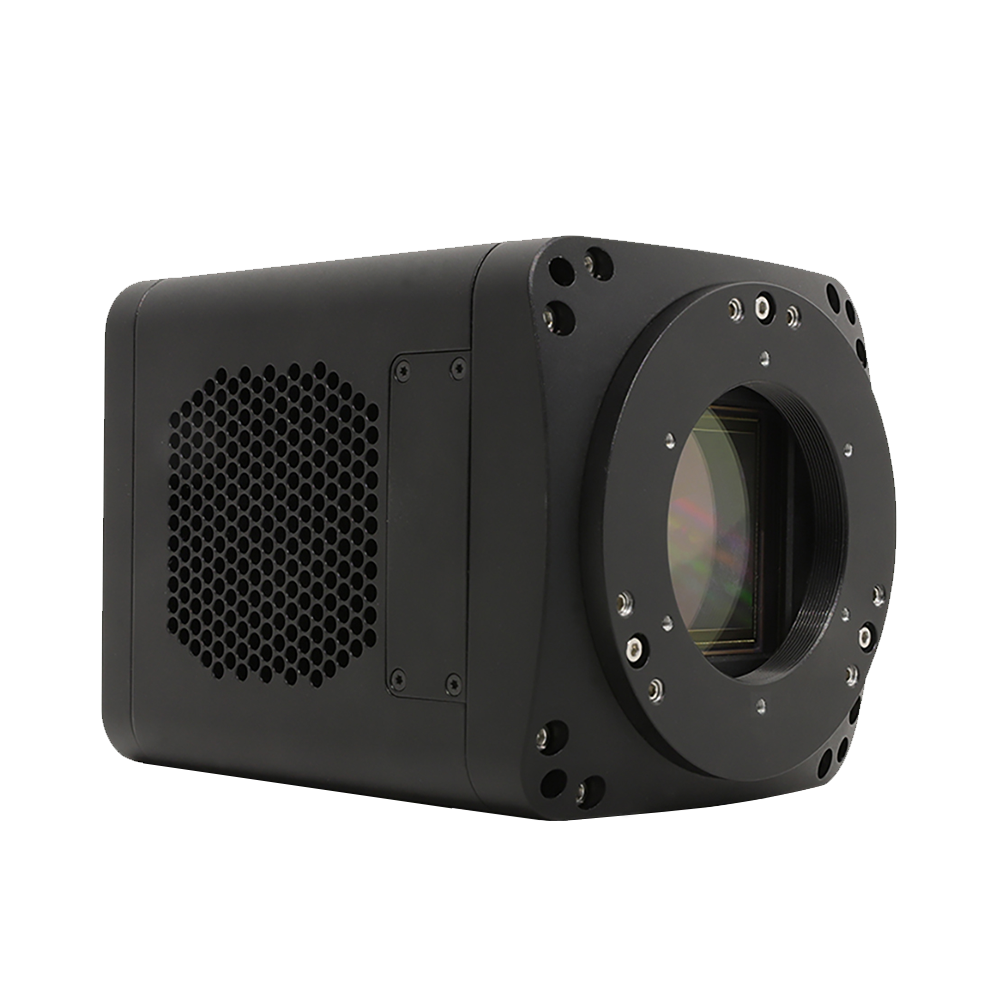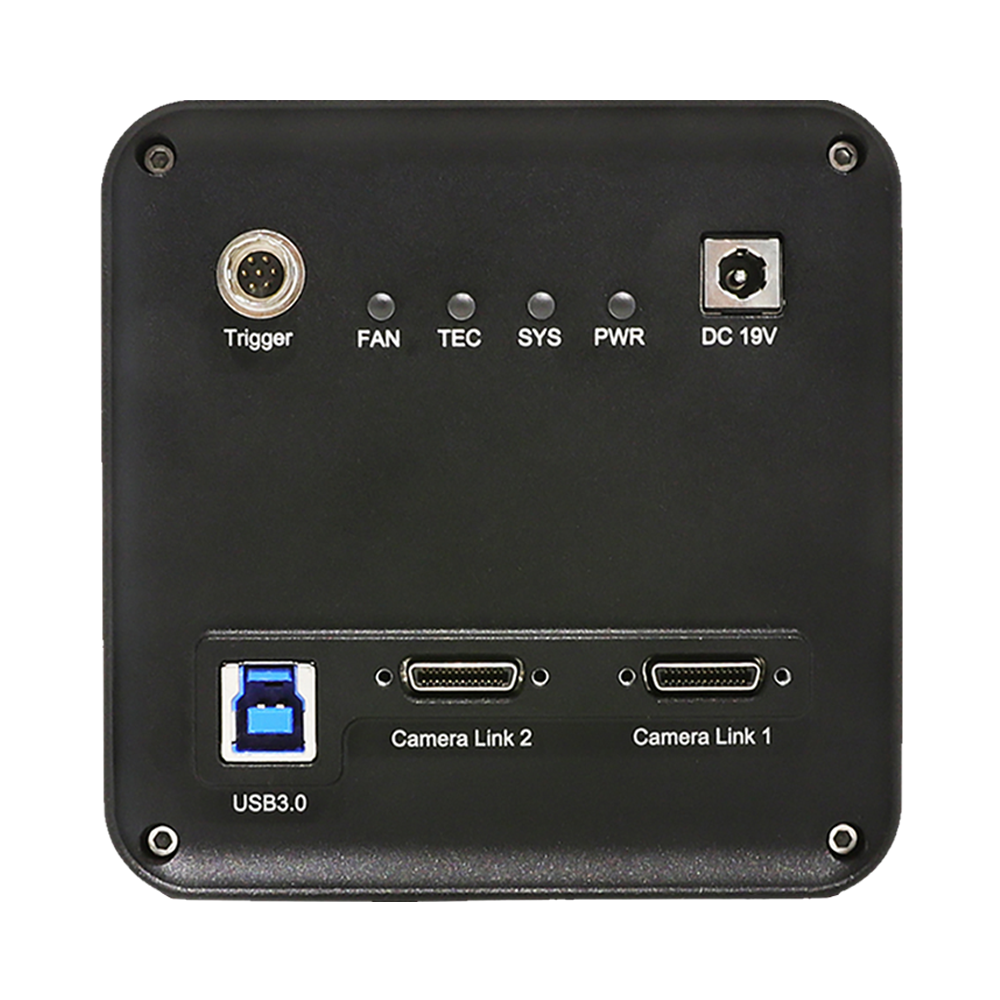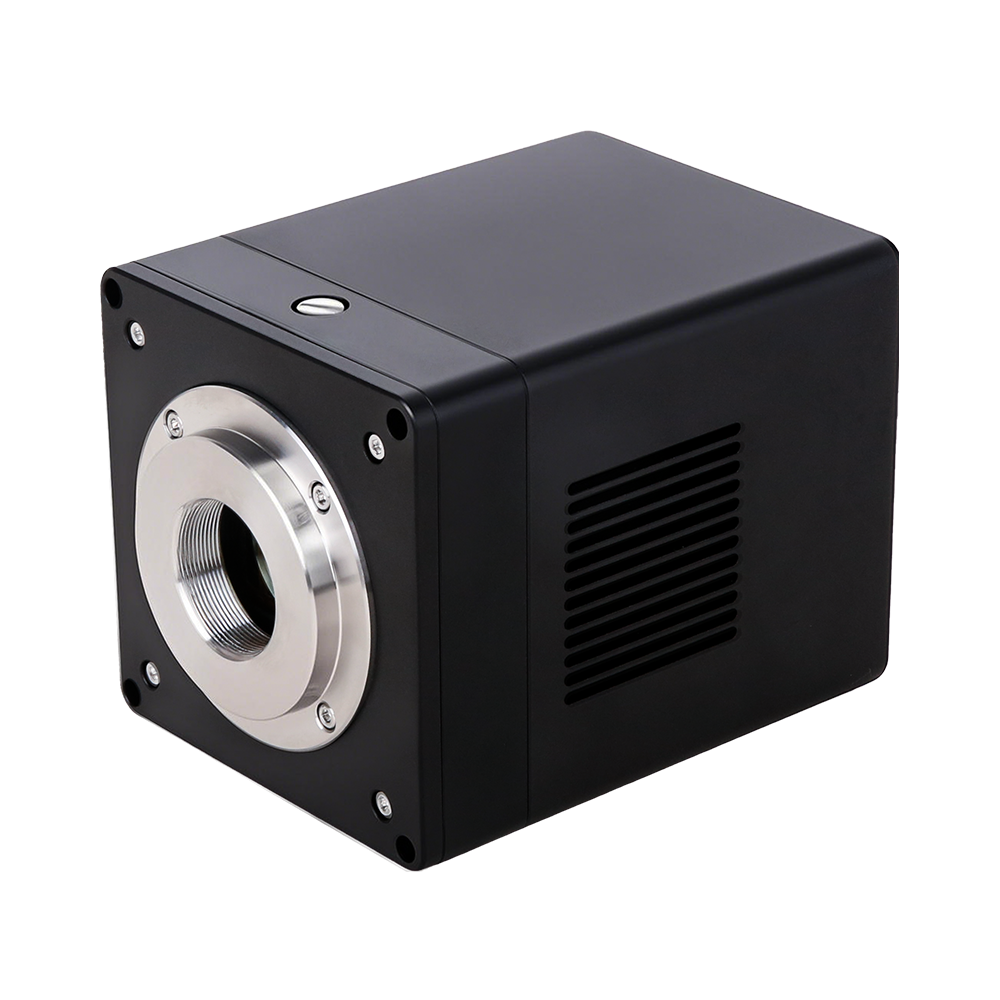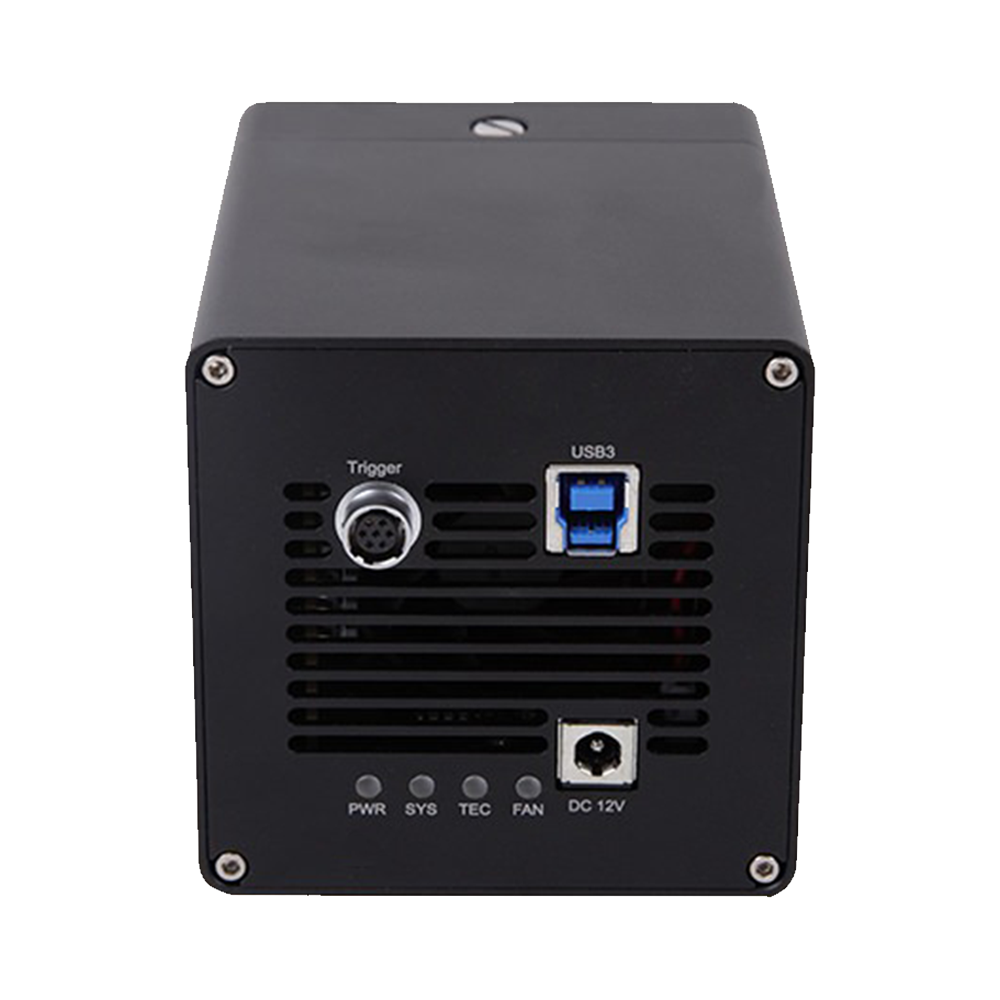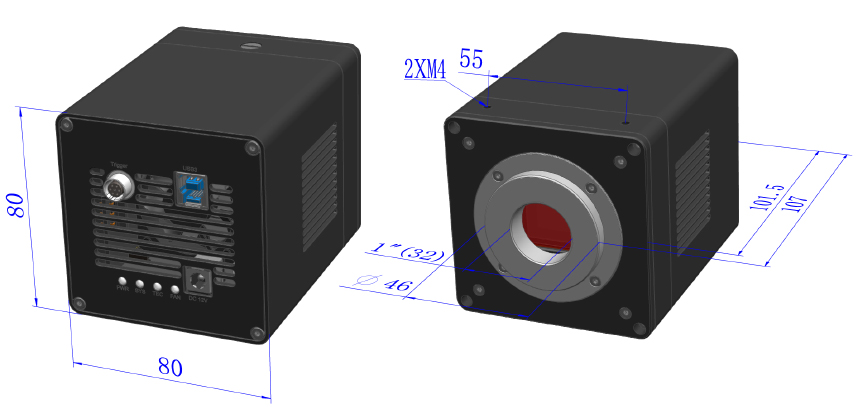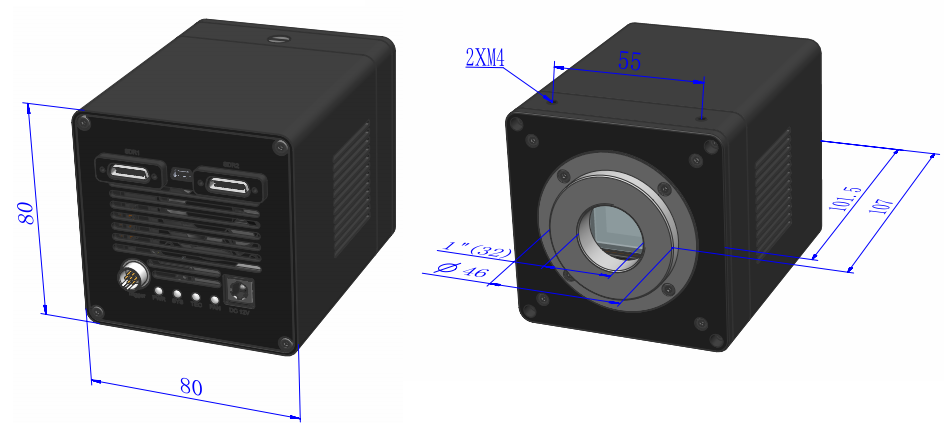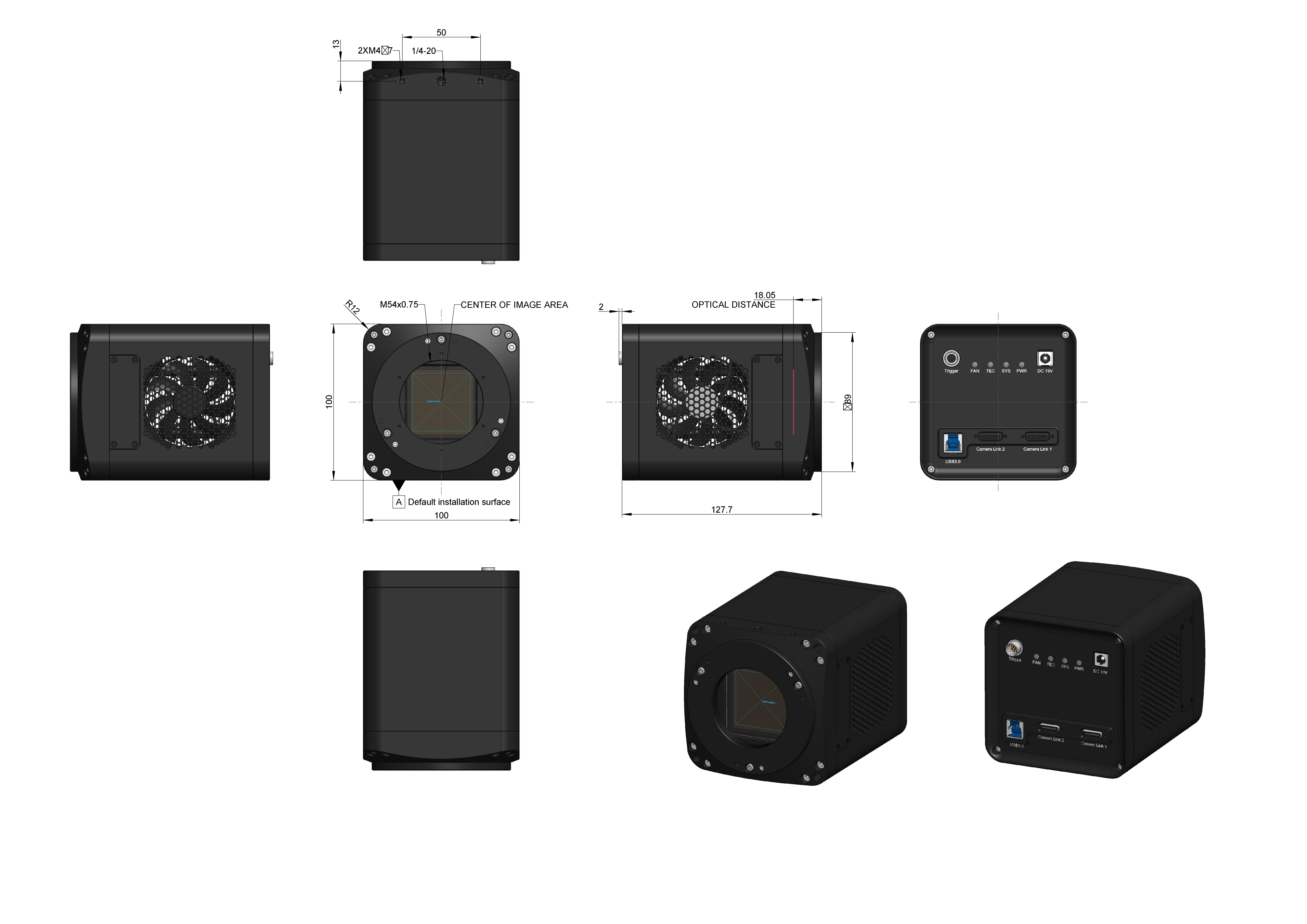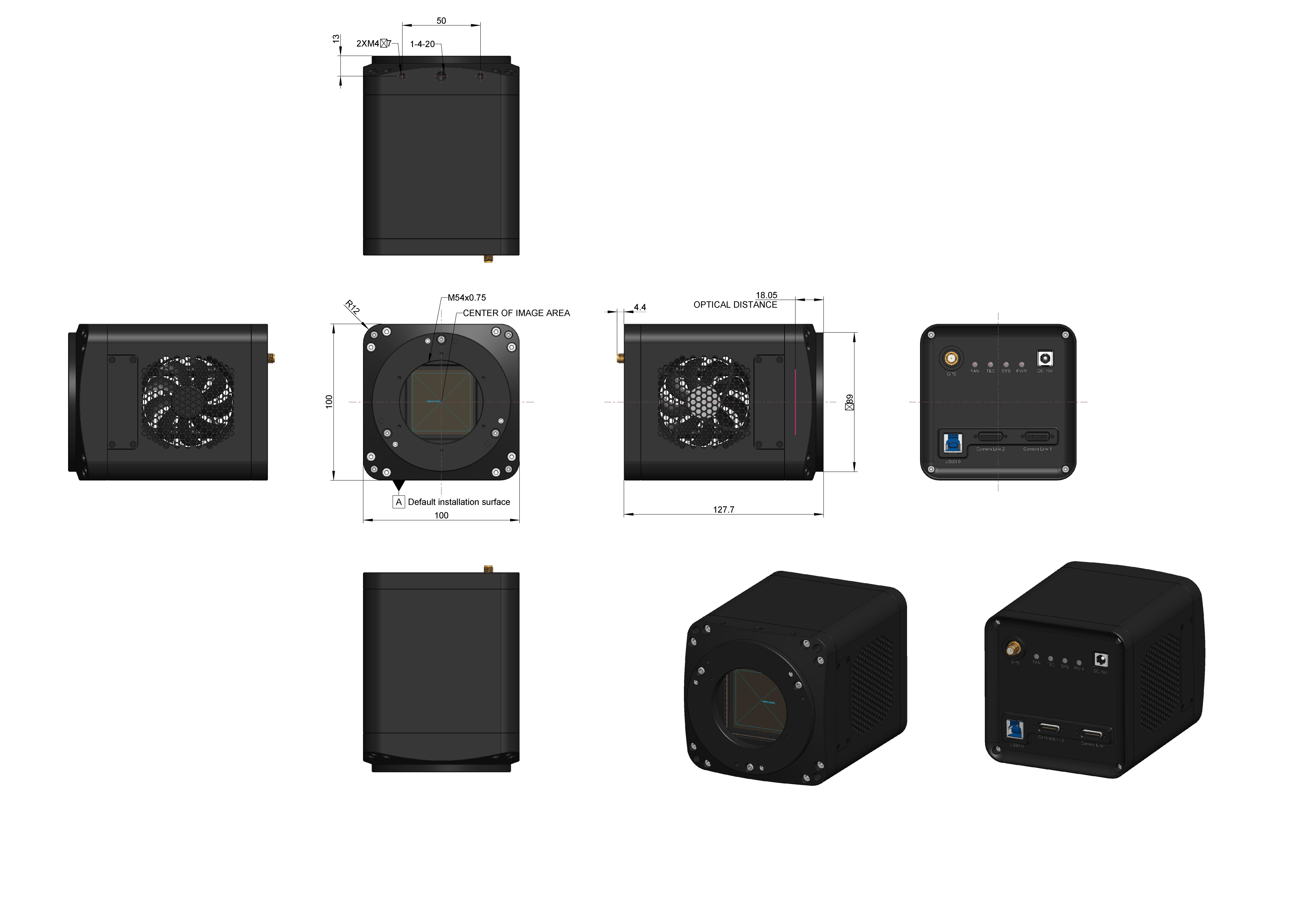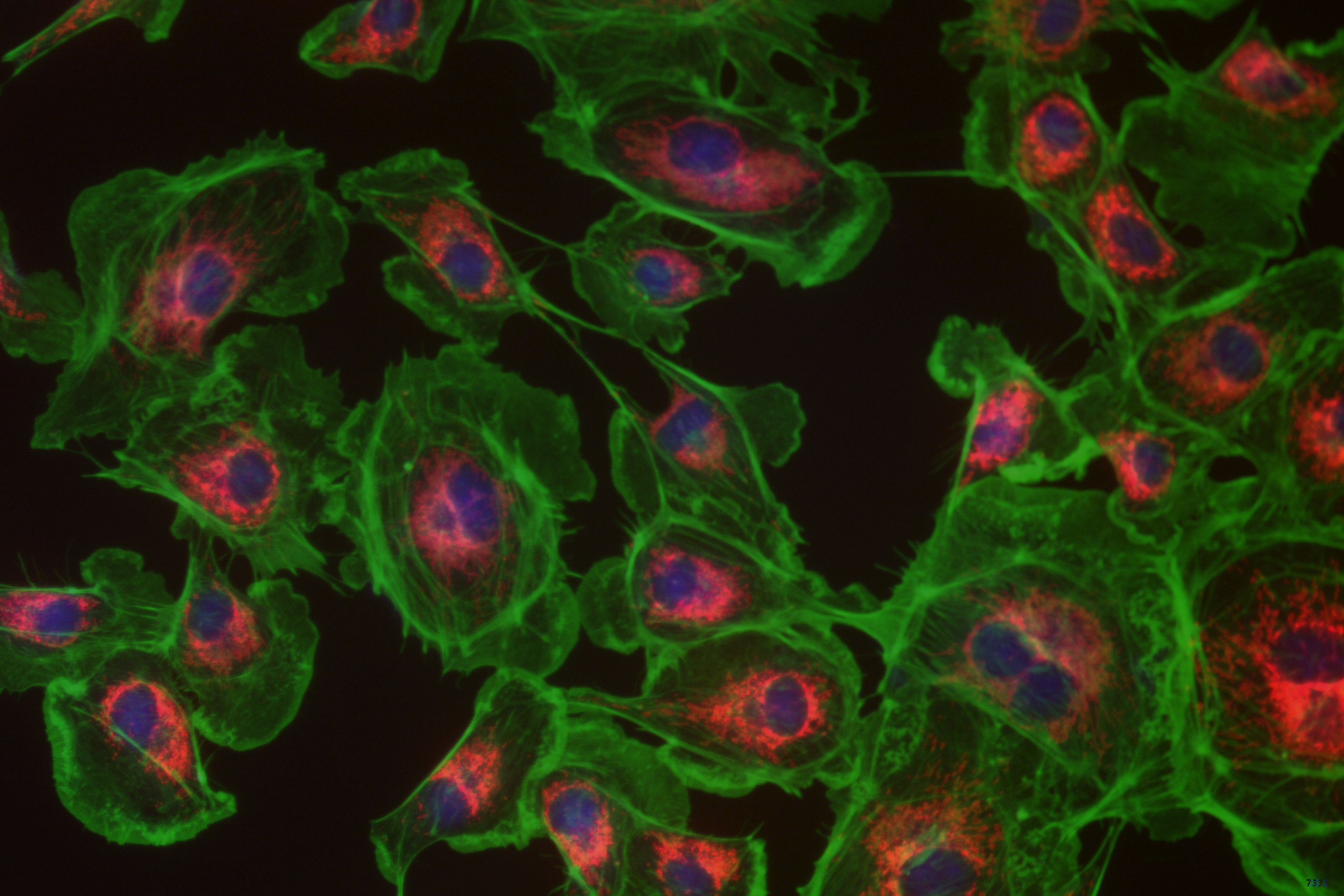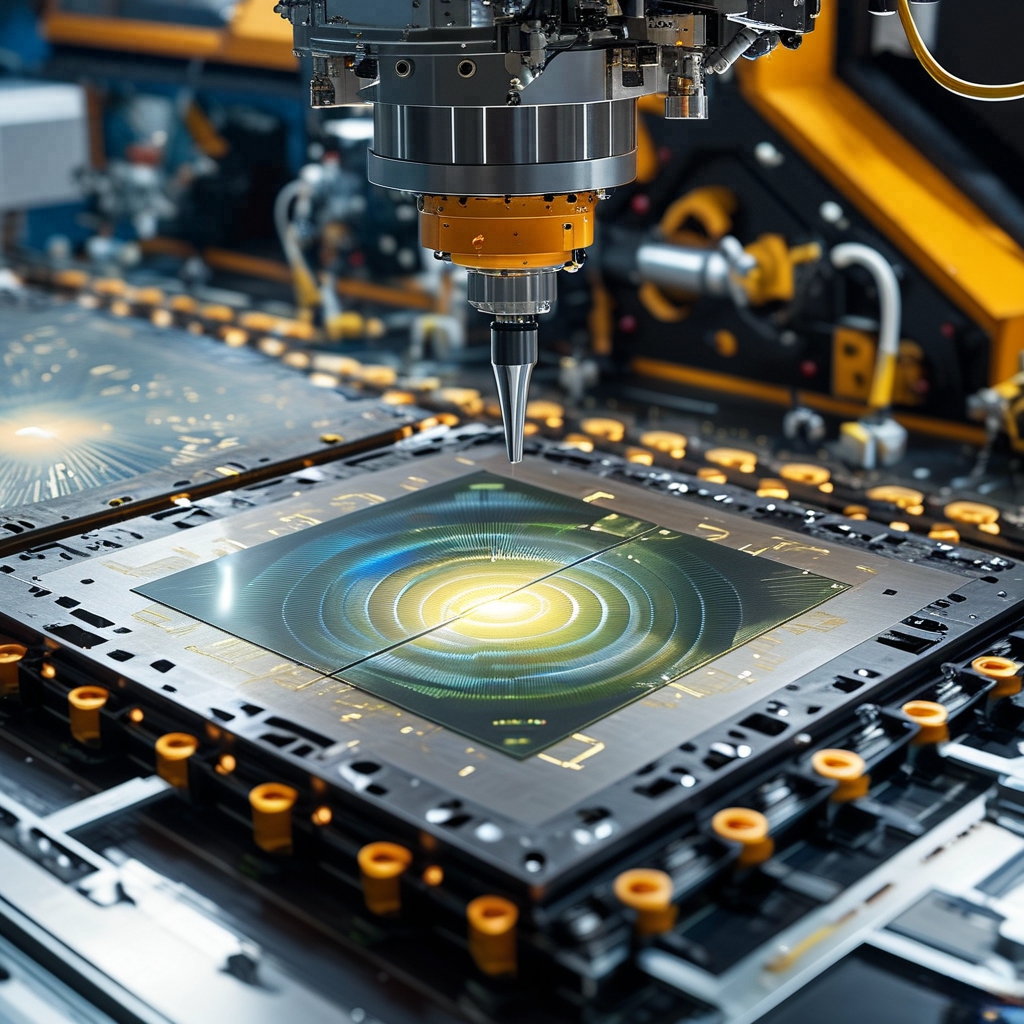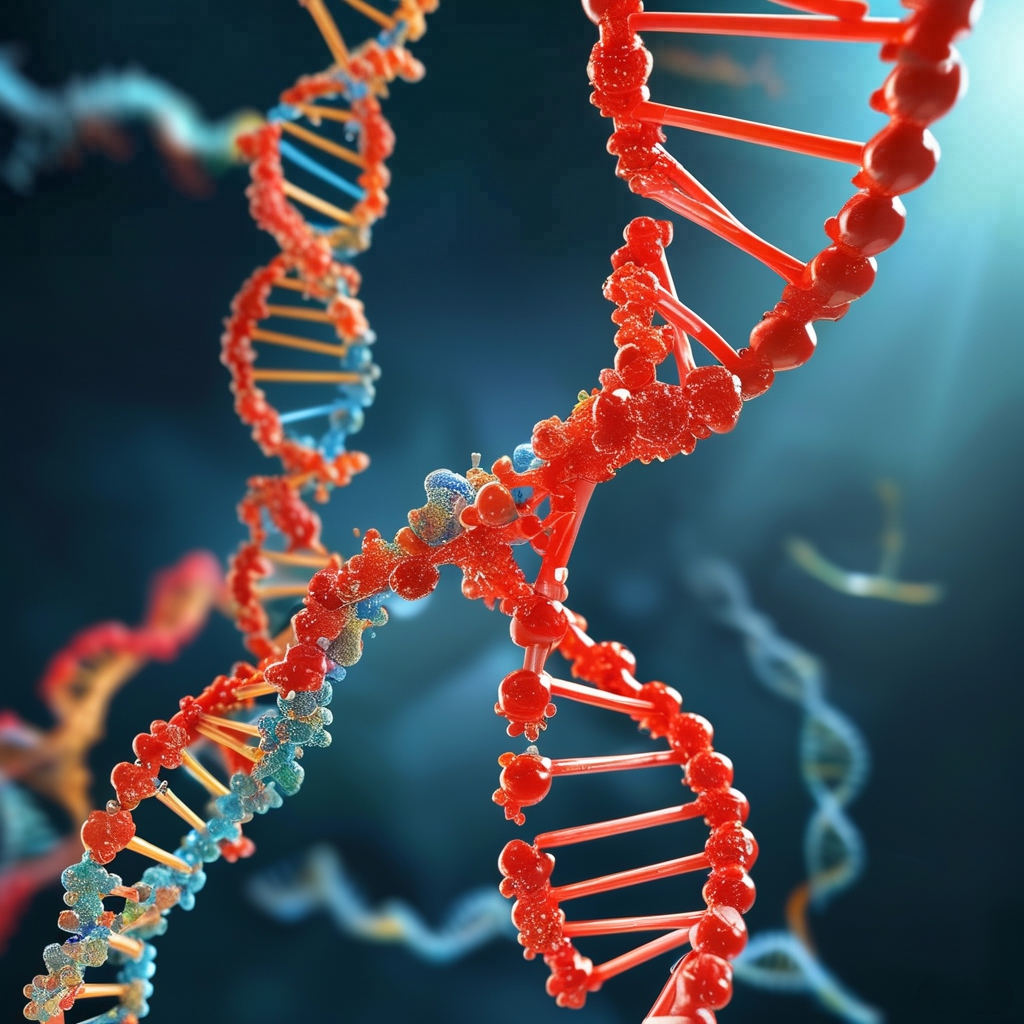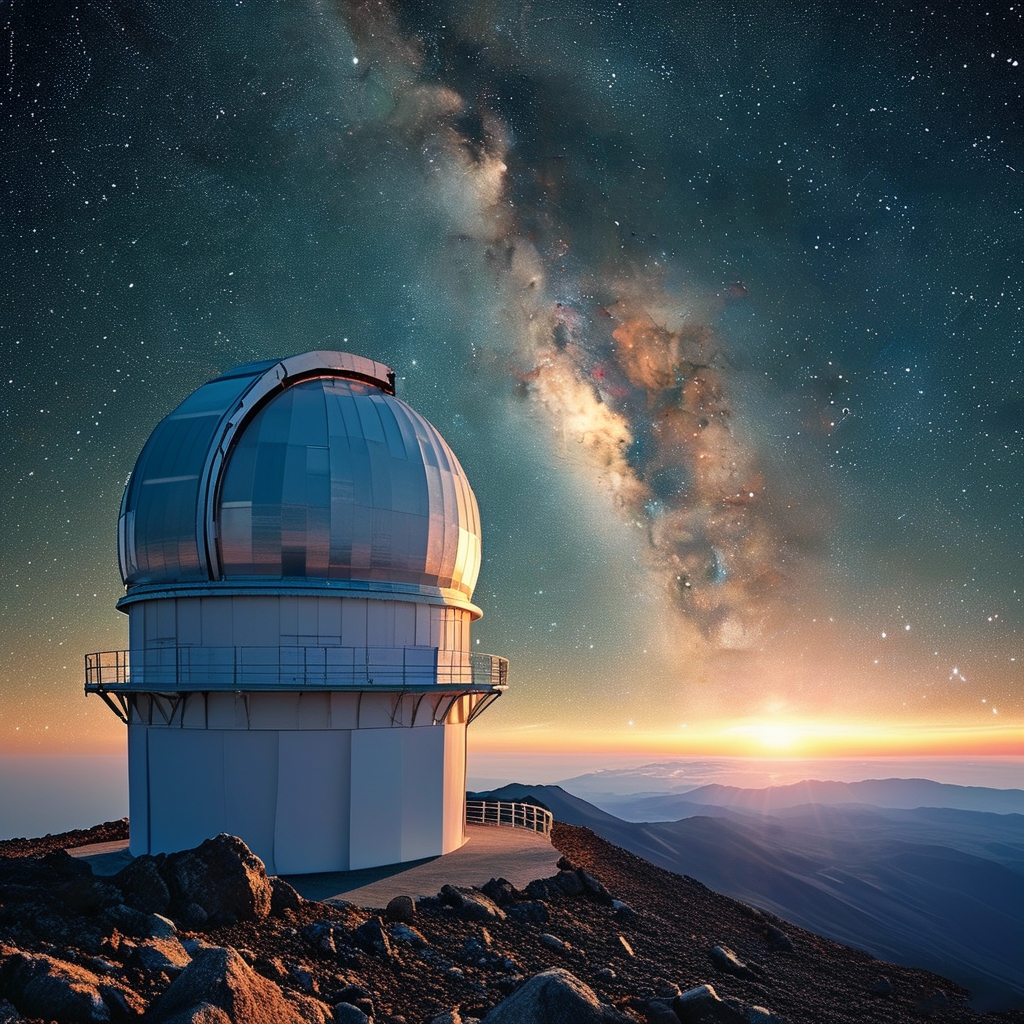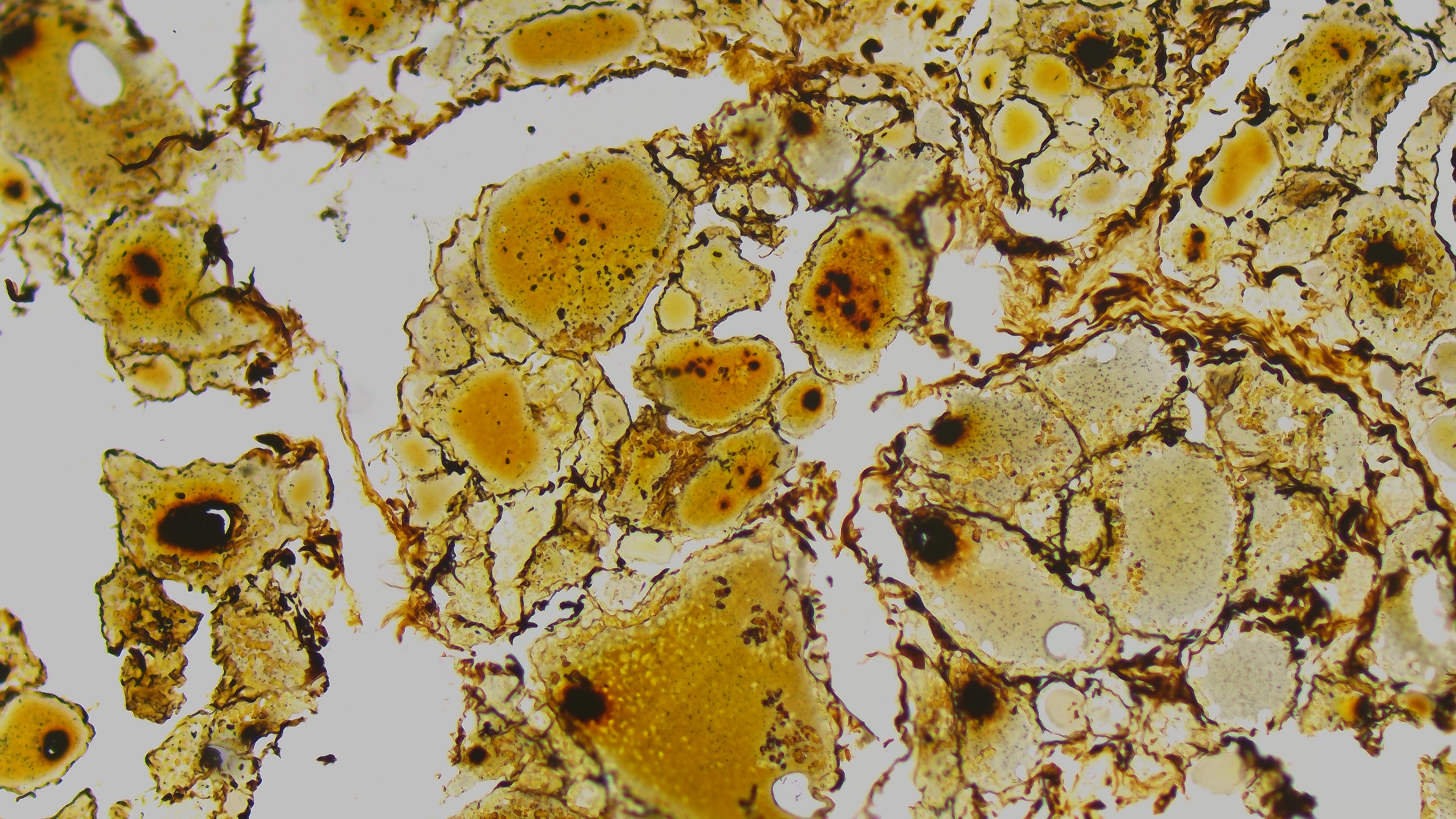sMAX04BM-U100 Scientific Camera
Product Introduction
The sMAX series is designed for low-light and long-exposure scientific imaging, covering sensor configurations including GSENSE2020 BSI, GSENSE4040, and GSENSE4040 BSI, offering high-resolution options from 2K×2K to 4K×4K. All models feature dual-stage TEC high-efficiency cooling structure, with sensor operating temperature approximately 40 °C below ambient, combined with anti-condensation optical structure to ensure image stability and cleanliness during low-temperature long-exposure applications.
The cameras support USB 3.0 / Camera Link high-speed data links and 16-bit data depth, providing research-grade functions such as temperature control, free-running/external triggering, and software/hardware binning. Some models can achieve exposure times up to 3600 s with GPS time synchronization, suitable for fluorescence microscopy, spectral measurement, astronomical observation, semiconductor inspection, and gene sequencing applications.
Windows / Linux SDK (C/C++/C#/Python) and supporting software such as ToupView/CLView are provided for secondary development and system integration.
Key Features
- Dual-stage TEC high-efficiency cooling, typical temperature difference ΔT ≈ 40 °C (below ambient), supporting long-duration low-noise imaging
- Built-in anti-condensation optical structure, effectively suppressing condensation under low-temperature and long-exposure conditions
- Temperature-controllable design: sensor temperature stabilizes to set value in short time (sMAX04 typical ≈ 5 min)
- Featuring GSENSE2020 BSI / GSENSE4040 / GSENSE4040 BSI sensors with high QE (up to 95% @ 560 nm; GSENSE4040 typical 74% @ 600 nm; GSENSE4040 BSI typical 90% @ 550 nm)
- Maximum resolution 4096 × 4096, covering 2K×2K to 4K×4K multiple specifications
- Support for 8/12/16-bit (some models include 11-bit / Global Reset / HDR modes), enhancing weak signal layering and dynamic range
- USB 3.0 / Camera Link high-speed data interface (some models with dual interfaces), meeting high-bandwidth transmission requirements
- Free-running and external trigger modes: supporting single-frame/multi-frame triggered acquisition and multi-device synchronization
- Optional -GPS models: built-in GPS timing module supporting UTC absolute time synchronization and multi-camera sync (model dependent)
- Software and hardware combined binning: software 2×2/3×3/4×4, some models support FPGA hardware 2×2
- Rich digital I/O: 1 opto-isolated input, 1 opto-isolated output, 2 configurable GPIOs (model dependent)
- Long exposure capability: up to 3600 s (model dependent; e.g., sMAX16 series), suitable for extremely low-light applications
- Flexible lens mount: C-mount / M54 × 0.75 (model dependent), convenient for matching with microscopy/spectroscopy/imaging systems
- Wide spectral response: 200–1100 nm (BSI models) / 300–1000 nm (GSENSE4040), covering visible to near-infrared
- Cross-platform development: Windows / Linux SDK (C/C++/C#/Python) provided, supporting ToupView/CLView; some models compatible with LabVIEW / MATLAB
Product Details
| Specifications | |
| Model | sMAX04BM-U100 |
| Sensor | GSENSE2020BSI (sCMOS) |
| Shutter Type | Rolling shutter / global reset |
| Color Type | Monochrome |
| Resolution | 4.2 MP (2048×2048) |
| Sensor Size | 13.31 mm × 13.31 mm |
| Sensor Diagonal | 1.2" (18.82 mm) |
| Pixel Size | 6.5 µm × 6.5 µm |
| Performance Parameters | |
| Frame Rate | 89 fps @ 2048×2048; 100 fps @ 1024×1024 |
| Bit Depth | 8-bit / 11-bit / 12-bit / 16-bit |
| Dynamic Range | 61.38 dB (11-bit); 59.73 dB (HCG, 12-bit) / 67.17 dB (LCG, 12-bit); HDR 91.83 dB (11HL) / 86.02 dB (12HL) |
| Sensitivity | 1.1×10⁸ e⁻/((W/m²)·s) @ 550 nm |
| Interface Parameters | |
| GPIO | 1 opto-isolated input, 1 opto-isolated output, 2 non-isolated I/O ports |
| Lens Mount | C-mount |
| Data Interface | USB 3.0 |
| Power Supply | 12 V DC |
| Physical Parameters | |
| Dimensions | 80 mm × 80 mm × 101.5 mm |
| Weight | 860 g |
| Environmental Parameters | |
| Operating Temperature | -30 °C to +60 °C |
| Operating Humidity | 20%–80% (non-condensing) |
| Storage Temperature | -40 °C to +85 °C |
| Storage Humidity | 20%–95% (non-condensing) |
| Other Parameters | |
| Operating System | Windows/Linux |
| Certification | TBD |
Product Overview
sMAX04BM-U100 is a scientific-grade cooled camera featuring a GSENSE2020BSI (sCMOS) back-illuminated sCMOS image sensor with the following characteristics:
- High-resolution imaging: 4.2 MP (2048×2048) resolution, 6.5 µm × 6.5 µm pixel size, sensor format 13.31 mm × 13.31 mm
- Shutter design: Features Rolling shutter / global reset design, supports monochrome imaging, suitable for fluorescence imaging, spectral analysis, gene sequencing and other scientific applications
- High-speed data transmission: Supports USB 3.0 high-speed data interface, maximum frame rate up to 89 fps @ 2048×2048; 100 fps @ 1024×1024 , data output formats include 8-bit / 11-bit / 12-bit / 16-bit
- Excellent dynamic range: Dynamic range up to 61.38 dB (11-bit); 59.73 dB (HCG, 12-bit) / 67.17 dB (LCG, 12-bit); HDR 91.83 dB (11HL) / 86.02 dB (12HL) , sensitivity of 1.1×10⁸ e⁻/((W/m²)·s) @ 550 nm
- Cooling system: Built-in cooling system can reduce temperature to TBD below ambient, effectively reducing dark current
- Rich interfaces: Supports GPIO interface, lens mount is standard C-mount interface
- Compact design: Overall dimensions 80 mm × 80 mm × 101.5 mm , weight approximately 860 g , power supply 12 V DC
- Full platform support: Supports Windows/Linux systems, includes ToupView software and cross-platform SDK, supports C/C++, C#, Python and other mainstream development languages
Core Performance Metrics
Frame Rate
Up to 89 fps @ 2048×2048; 100 fps @ 1024×1024
Resolution
4.2 MP (2048×2048)
Dynamic Range
61.38 dB (11-bit); 59.73 dB (HCG, 12-bit) / 67.17 dB (LCG, 12-bit); HDR 91.83 dB (11HL) / 86.02 dB (12HL)
Scientific Imaging Features
Back-illuminated Sensor
Features back-illuminated sCMOS sensor with higher quantum efficiency, particularly suitable for weak light imaging applications
Cooling Noise Reduction
Built-in cooling system effectively reduces dark current and noise, improving image quality and signal-to-noise ratio
High Sensitivity
Sensitivity reaches 1.1×10⁸ e⁻/((W/m²)·s) @ 550 nm , meeting high-precision requirements for scientific imaging
Flexible Control
Supports ROI, binning, trigger control and other functions, adapting to different research requirements
The sMAX04BM-U100 camera, with its excellent scientific imaging performance, stable cooling system, and rich interface configuration, is an ideal choice for research institutions, medical facilities, and high-end industrial applications, capable of meeting various precision imaging and analysis requirements.
sMAX04BM-U100 Product Manual
PDF format, includes detailed technical parameters and dimensional structure
SDK Development Kit
Supports Windows, Linux, macOS and other multi-platforms
3D Model Files
STEP format, for mechanical design integration
Packing List #
Standard accessories and packing details for sMAX cooled scientific CMOS cameras (USB3.0 / CameraLink · −40 °C cooling)
Recommended kit (sMAX04BM)
- Camera body - sMAX series
- Power adapter - input AC 100~240 V 50/60 Hz, output DC 12 V 3 A
- I/O cable - 7-pin cable or extension
- Cable - USB3.0
- Lens (optional) - C-mount
Recommended kit (sMAX04BM-CL100)
- Camera body - sMAX series
- Power adapter - input AC 100~240 V 50/60 Hz, output DC 12 V 3 A
- I/O cable - 7-pin cable or extension
- Cable - CameraLink
- Lens (optional) - C-mount
Recommended kit (sMAX16AM / sMAX16BM)
- Camera body - sMAX series
- Power adapter - input AC 100~240 V 50/60 Hz, output DC 19 V 4 A
- I/O cable - 7-pin cable or extension
- Cable - USB3.0 and CameraLink
- Lens (optional) - C-mount
Product Dimensions #
Outline drawings for sMAX cooled scientific CMOS cameras
Frequently Asked Questions
Learn more about scientific CMOS cameras
- Ultra-low read noise: sCMOS read noise approaches 1 e⁻, far outperforming traditional CCDs.
- High frame rate: Parallel readout architecture supports 100 fps or higher.
- Wide dynamic range: Captures bright and dark regions simultaneously with ratios up to tens of thousands to one.
- Large field of view and high resolution: Suits high-resolution, wide-field imaging.
EMCCD cameras excel in ultra-low light or long-exposure conditions.
sCMOS delivers greater value for high-resolution, high-speed imaging with low noise.
In-Depth Product Overview
sCMOS Sensor Architecture
Each pixel has its own amplifier and column ADC for parallel readout, enabling high-speed, high-SNR imaging. Dual gain channels and dual ADC designs further expand dynamic range and sensitivity.
Low Noise + Wide Dynamic Range
Typical sCMOS noise is < 2 e⁻ (30 fps) with dynamic range up to 50,000:1—far exceeding traditional CCDs.
Fast Readout & Versatility
Parallel readout supports >100 fps for capturing fast events such as cell motion, fluorescence lifetime studies, and plasma dynamics.
Low-Light Performance
Back-illuminated sCMOS sensors achieve >95% QE from UV to NIR, with low fixed-pattern noise and cooling down to −30 °C for astronomy and other needs.
Application Scenarios & System Value
Ideal for fluorescence microscopy, astronomy, cold atom research, X-ray imaging, materials inspection, and industrial microscopy—delivering high sensitivity, precision, and adaptability.
Key Application Areas
Representative sCMOS applications
sCMOS Technology Advantages Summary
- Ultra-low read noise (<2 e⁻)
- High frame rate (>100 fps)
- Wide dynamic range (50,000:1)
- High quantum efficiency (>95%)
- Large FOV, high resolution
- Cooling capability (−30 °C)
- Parallel readout architecture
- Adaptable to diverse research needs

